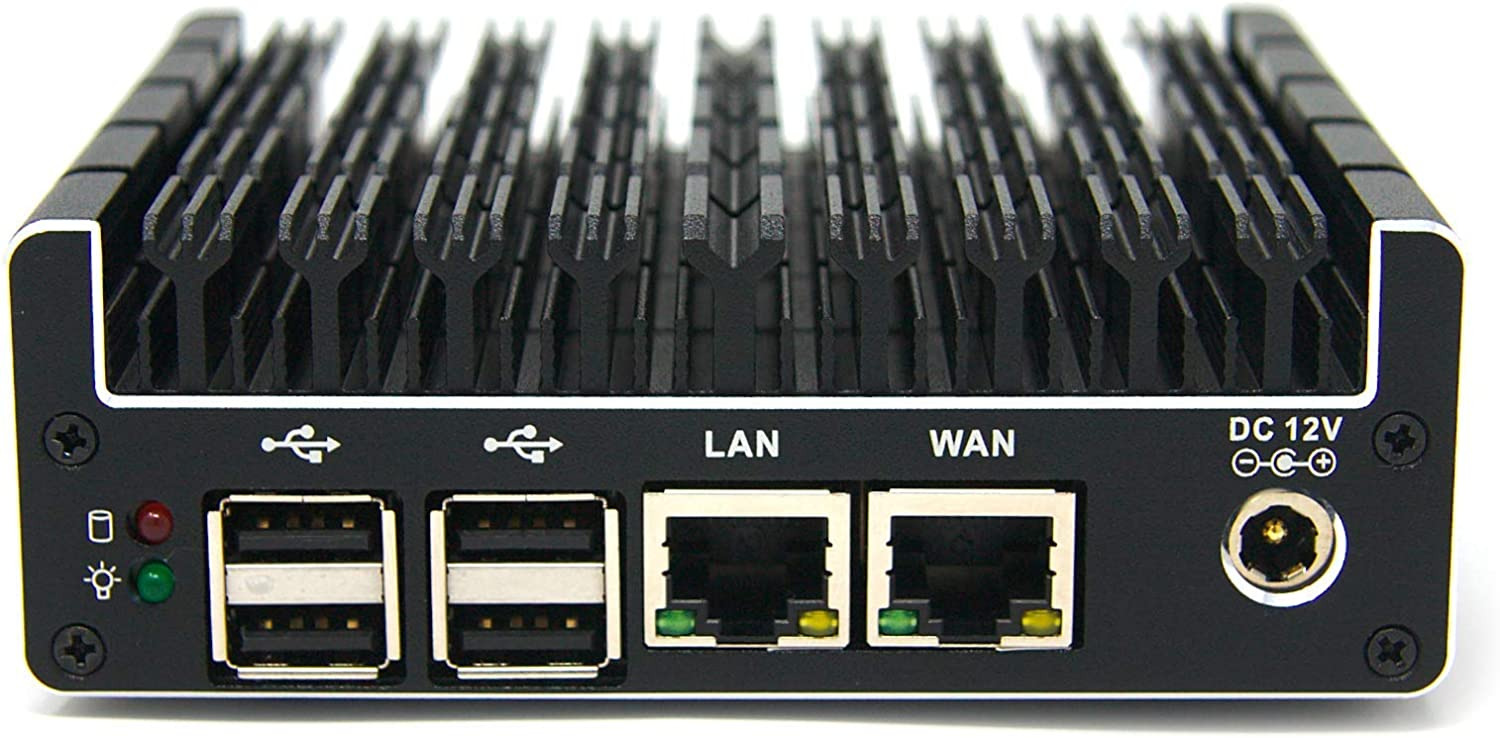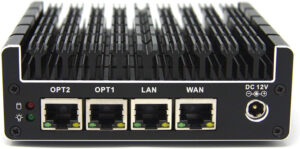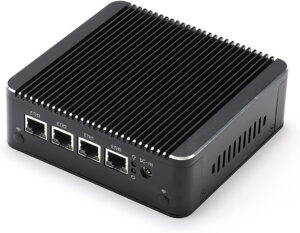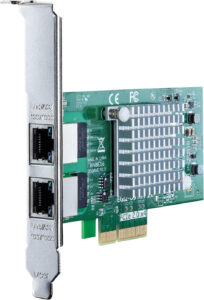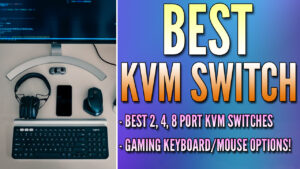In this article, we’re going to look at the best pfSense hardware. pfSense is a free and open-source firewall and router. One of the biggest benefits of pfSense is that it can be installed on various types of hardware. With a compatible network card, you can turn an old PC or thin client into a router or even run it as a virtual machine.
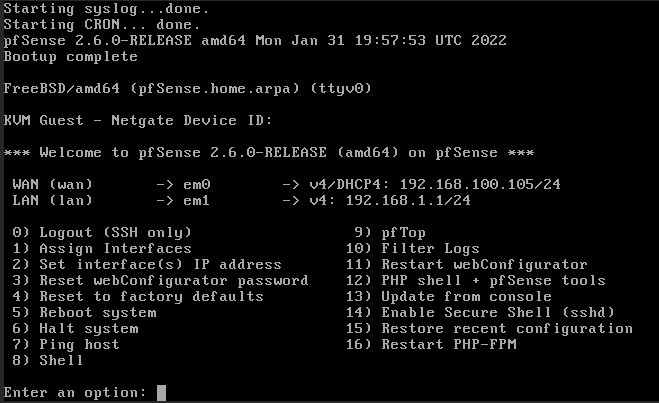
If you’d like to purchase a new device, you have various options and that’s what we’ll look at in this article. There isn’t a right or wrong answer on the best pfSense hardware that you can use, but the items below are some of my personal favorites.
The links below are Amazon affiliate links which means that I earn a percentage of each sale at no cost to you. Thank you for your support.
Why Use Your Own Hardware for pfSense?
Choosing to use your own hardware for pfSense can be advantageous. First, this option could be significantly more cost-effective than purchasing the device directly from Netgate. Second, using your own equipment gives you full control over the specifications, allowing you to set the exact device that you’ll need based on your specific requirements
Finally, personally sourced hardware often outperforms many standard consumer-grade routers, leading to better overall network performance and greater data processing capabilities. In general, it’s great to run pfSense on existing hardware, but purchasing some of the options below will give you awesome performance at an affordable price.
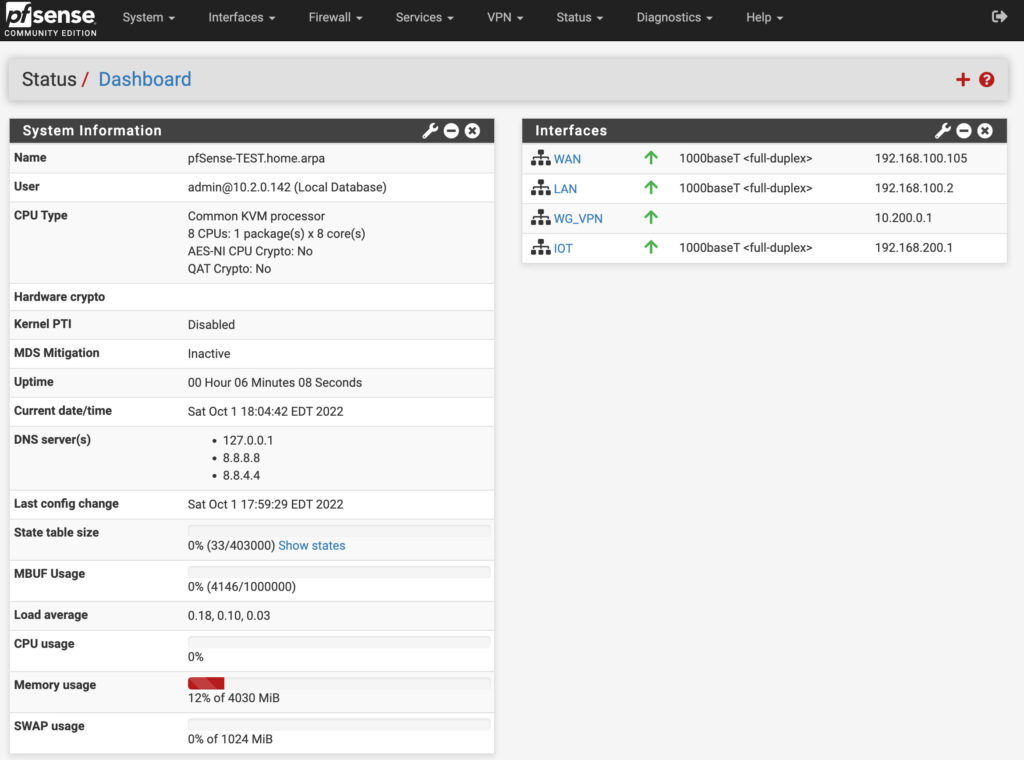
Best pfSense Hardware for Home/Small Businesses (Preinstalled/ Barebones)
I want to be clear that if you want to purchase a device that has pfSense installed on it by default (and has the option for support), you should purchase the device directly from Netgate. They have various devices that are extremely powerful and will fit almost any budget.
However, if you’d like to install it manually or pick your own hardware, these are some of the best pfSense hardware options that you can select.
Netgate 1100

The Netgate 1100 is a device created specifically for pfSense (Netgate creates and maintains pfSense). This is the only device on this list that actually runs pfSense+ out of the box, meaning you’ll have the enterprise version of pfSense with advanced features that pfSense CE (Community Edition) doesn’t have.
Click here to purchase the Netgate 1100 on Amazon
Netgate 1100 Review
This is the cheapest option you can purchase on this list and it comes directly from Netgate. For the majority of people, this device is perfect, but it will fall short for some because of the ARM processor and limited memory. These will directly impact more advanced features like IDS/IPS, advanced firewall rules, and more.
Again, it’s the only (and cheapest) device you can get from Netgate themselves, and there’s a lot of value in that, but if you really want a Netgate device and need to do more advanced things, spring for the Netgate 2100 as it’s a far better overall device.
CONCLUSION: Quite honestly, I wouldn’t buy this device unless you NEED pfSense+, don’t want to upgrade pfSense CE to pfSense+, and don’t plan on doing heavy routing with IDS/IPS. This is a starter device that will get you into the pfSense ecosystem, but there’s a pretty good chance that you’re going to upgrade this device at some point if you do decide to go with it.
Protectli Vault FW2B
The Protectli Vault FW2B is a two-port mini PC that has an Intel Dual Core 64-bit processor and 4GB of RAM. It comes with a 32B mSATA SSD. Since this device has two ports, one will be used for your WAN (from your modem) and one will be used for your LAN (to your switch).
I want to be clear that pfSense will not be installed on this device by default, but the install process is very straightforward and you’ll be up and running quickly and efficiently.
Click here to purchase the Protectli Vault FW2B
Protectli Vault FW2B Review
The Protectli Vault FW2B is a beginner device as well (similar to the Netgate 1100), but it comes with a more powerful x86 processor as opposed to an ARM processor, so it’ll be better suited for more complex environments, especially if you plan on doing IDS/IPS in pfSense.
The downside is that you must install pfSense CE (as opposed to the pfSense+ that Netgate devices come with), but that’s about where the downsides stop. From a price-to-performance perspective, this device is simply better than the Netgate above.
CONCLUSION: This device is for beginners, but beginners from a usage perspective. The Netgate 1100 comes with pfSense installed, so you have to be advanced enough to understand how to actually install the OS on this device, but as soon as it’s installed (and ignoring the differences between pfSense Plus and pfSense CE), this device is simply better and more powerful than the 1100 above.
Protectli Vault FW4B
The Protectli Vault FW4B is a four-port mini PC that has a Quad Core 64-bit processor and 8GB of RAM. It comes with a 120GB mSATA SSD. It’s extremely similar to the Protectli Vault FW2B, but has four Gigabit ethernet ports as opposed to two. It also has a faster processor, more memory, and a larger hard drive and is what I consider to be the best pfSense hardware you can use (outside of Netgate devices).
You’ll have to install pfSense on this device, but this is a good device for users who are interested in having more than two ports. If you will only use two ports, go with the Protectli Vault FW2B.
Click here to purchase the Protectli Vault FW4B
Protectli Vault FW4B Review
This device is slightly more powerful than the FW2B above, but the bigger difference is there are two OPT ports that you can use for other interfaces. If you are in a unique situation where you don’t plan on getting a Switch (most will, and I can’t really think of a scenario where you wouldn’t), but assuming you didn’t plan on getting a Switch, those two ports are practically mandatory. As soon as you start configuring the operating system, you’ll see that you need more ports, so those are nice to have.
CONCLUSION: This device is a better Protectli Vault FW2B. It has a slightly more powerful processor, but more importantly, has two additional OPT ports which can be used for different interfaces. If you’re someone who plans on using a bunch of different VLANs and want additional ports, get this over the FW2B, but check the options below first as technically, they’re going to be even more powerful than this.
HUNSN RS34g
The HUNSN RS34g has an Intel Quad Core, 64-bit processor with 8GB of RAM, and a 128GB SSD. The benefit of this device is that it has 4 x 2.5GbE ports as opposed to the 1GbE ports that come standard on the Protectli devices. If your network speeds from your ISP are greater than 1Gbps, you will need to use 2.5GbE to get the full, advertised speed.
Click here to purchase the HUNSN RS34g
HUNSN RS34g Review
If your current ISP speeds aren’t greater than 1Gbps, 2.5GbE is a “nice to have”, at least from a WAN perspective. You can get faster local network transfer speeds with 2.5GbE, but the devices connected must have 2.5GbE NICs as well. With that said, this device is simply better than the Protectli Vault FW4B above.
The processor is better, it has 2.5GbE NICs, a console port, and the same quiet, fanless design. I like to provide multiple options, but if brands aren’t important to you (many people love Protectli), get this device.
CONCLUSION: This device is practically the same thing (four ports, two for LAN/WAN and two OPT) as the Protectli Vault FW2B, but with a better processor, and the memory can be upgraded, which means better IDS/IPS and routing. There’s really no reason to get that device over this one, outside of simply wanting to stick with the Protectli name.
Intel I350 Gigabit NIC
If you have an old device lying around or you’d like to install pfSense on a virtual machine, there’s no reason to purchase new hardware (unless you would like the form factor). An inexpensive Intel I350 NIC can be installed in the device you have (assuming you have a PCIe slot available) which you can then use inside of pfSense.
Click here to purchase the Intel I350 Gigabit NIC
Intel I350 Gigabit NIC Review
This device has two ports, and you’ll be able to use one as your WAN (connected from your modem) and one as your LAN (connected to your switch). This is a great option for people who are interested in using pfSense with existing hardware, but that’s where it stops.
If you’re looking to purchase hardware that will run pfSense, this isn’t an option. Keep in mind, they’re two 1GbE ports, so for ISPs that have greater than 1Gb speeds, you’re going to need a 2.5GbE port (assuming you have 2.5GbE on your Modem too), but for those unique scenarios where you have the hardware, a PCIe slot, and just want to repurpose that hardware to run as a firewall, this is all you need.
CONCLUSION: There’s a pretty good chance that you’re going to know if you need or want to run your own firewall on desktop hardware. This isn’t going to be the most popular option, but if you’re in unique scenarios (virtualizing or just have old hardware laying around), this is a very cheap way of setting up a firewall.
Conclusion & Final Thoughts on pfSense Hardware to Use
These are some of the best pfSense hardware options you can use for preinstalled and DIY firewalls. They offer more than enough for pfSense, have fanless designs, and have enough ports for configuring VLANs and your overall network.
With that said, there is an endless amount of hardware that you can use pfSense on, these are just some of my personal favorites when it comes to pfSense hardware. Whether you want to purchase a stand-alone device or an individual NIC that will allow you to run pfSense as a virtual machine or on old hardware, you have tons of options.
Thanks for checking out the article on the best pfSense hardware. If you have any questions, please leave them in the comments!

